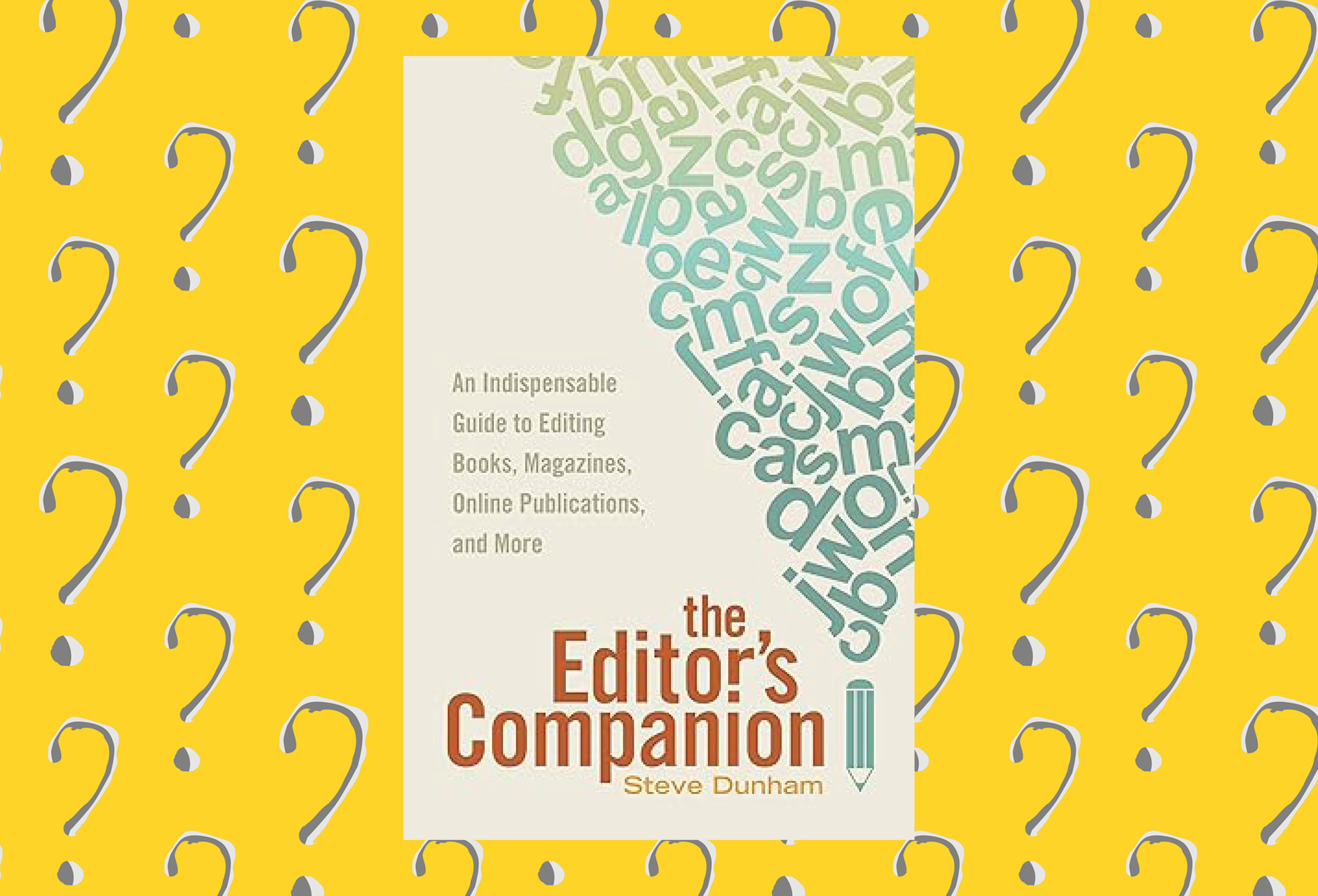
The Editing Company Inc.
Toronto, Ontario
RECENT POSTS
TEC Blog
Categories
Show All- Editing
- Grammar
- Usage
- Style
- Editor/writer
- Publishing
- Business
- Writing
- Writers support group
- Event
- Proofreading
- Copyright and permissions
- Usage
- Book reviews
- Editing new media
- Technology
- Books & libraries
- Ttc stories
- Editing & marketing
- Office happenings
- Social media & community
- Language & editing
- Social media
- Editing & marketing
- Indexing
- Book design
- Tec clients
- Guest blogger
- Creative women doing sixty
- Book clubs
- Books and reading
- Ebook technology & services
- Editing numbers
- Editing & technologies
- Opera, movies

A Review of Steve Dunham’s The Editor’s Companion: An Indispensable Guide to Editing Books, Magazines, Online Publications, and More
by Michael Bedford
Published at 2023-10-10
I recently had the pleasure of reading Steve Dunham’s The Editor’s Companion: An Indispensable Guide to Editing Books, Magazines, Online Publications, and More. And, though the title is nearly a paragraph long, this deftly written, well organized, and wonderfully pithy book provides readers with exactly what the lengthy title promises. Written primarily for editors, this guide also provides a handy and surprisingly humorous reference for writers looking to get an idea of what it is that editors do.
As A Resource for Editorial Reference Books
Even seasoned editors are likely to find new options for editorial guides within Dunham’s pages. Familiar texts such as The Associated Press Stylebook and Libel Manual and, Dunham’s personal favourite, Words Into Type make appearances but lesser-known titles such as James Rogers’s The Dictionary of Clichés and Candi Harrison’s blog “Candi On Content” also make appearances. In fact, Dunham provides a list of 23 references, both online and in print, in a very helpful section in Chapter 9.
Finding the Humour
One of my favourite things about editing is finding the humour in how a sentence or phrase could be misread, and Dunham’s examples of documents that required his editorial tweaking provide several good chuckles. I quite liked his “Mistaken Junctions” section in Chapter 5, particularly “The Secret Service conducts financial crimes and counterfeiting investigations.” Guidebooks aren’t often considered page-turners, so it's important that the author keep readers interested. Although I wouldn’t necessarily call this book a page-turner, Dunham certainly kept me interested, even while the book explains topics that some readers may consider relatively dry, such as grammar and focus.
Organization
Disorganized or confusingly laid-out guidebooks provide more annoyance than they’re worth. If a writer or editor wants to know something specific, they don’t want to waste their time trying to find it. Dunham provides an organized and easy-to-use reference only 11 chapters long—plus an appendix—in just over 200 pages.
Dunham’s chapters are divided by well-timed sub-headings, and his text-boxes and illustrations—a collection of humorous editorial misses—provide useful information and funny examples of what not to publish.
As An Editorial Guide
Dunham’s list of 23 references illustrates quite well that his guide has some stiff competition, so it’s important that a new editorial guide provide some new information or present itself in a particularly engaging way. One complaint that a seasoned editor may have against Dunham’s guide is that the bulk of the information in it has all been published elsewhere, but that’s no real complaint against The Editor’s Companion. Instead, the strength of Dunham’s guide is in its well-researched and well-written approach to familiar subjects.
Although seasoned editors are more likely than not to find The Editor’s Companion a helpful guide, books like this aren’t really meant for seasoned editors anyway. Instead, Dunham’s guide provides common-sense answers to editorial questions that inexperienced or anti-prescriptive editors are likely to have. And, his argument for the import of the rules that he promotes is easy to follow and easy to agree with: the editor’s job is to help the author communicate effectively, and the rules and processes he discusses will aid in achieving that result.
Favourite Bits
The Editor’s Companion is full of funny editorial mishaps, but the best collection in the book comprises Chapter 11, which Dunham has entitled “Ones That Got Away.” Some of the examples on display offer a bit of dark humour, such as a headline from Dunham’s local paper, “Van driver recovering from fatal Stafford crash.” But, even if some readers don’t see the humour in a botched headline, Dunham’s reason for including it are clear: keep an eye out for double meanings, especially when writing headlines.
Entitled “Editorial Relationships,” Chapter 8 was another highlight. Sometimes, chapters on editorial relationships are unhelpful, but Dunham’s three guiding principles for professional editorial relationships, which he provides on page 130, present a straightforward approach to how best to approach any contract.
I also appreciated Dunham’s section on pronouns in Chapter 5, “Editing for Grammar.” Quoting a section from a document by the National Council of Teachers of English, Dunham provides several helpful tips on how to avoid using the awkward “him/her” and “his/her” construction without defaulting to the outdated practice of misgendering groups by using masculine pronouns, such as “his.”
One of my favourite tips on this list is the instruction to drop the possessive form in a sentence. So, rather than, “The average student is worried about his grades,” the sentence becomes, “The average student is worried about grades.”
Final Thoughts
Opinions about what constitutes editorial pedantry vary widely among writers and editors, but Dunham makes a good argument for following the rules in his guide in his Introduction: “We editors are here to help writers get their work published, to communicate with their readers, and to do the best they can.”
Michael Bedford is a freelance writer and editor. You can reach him at mbedford4687@gmail.com.




